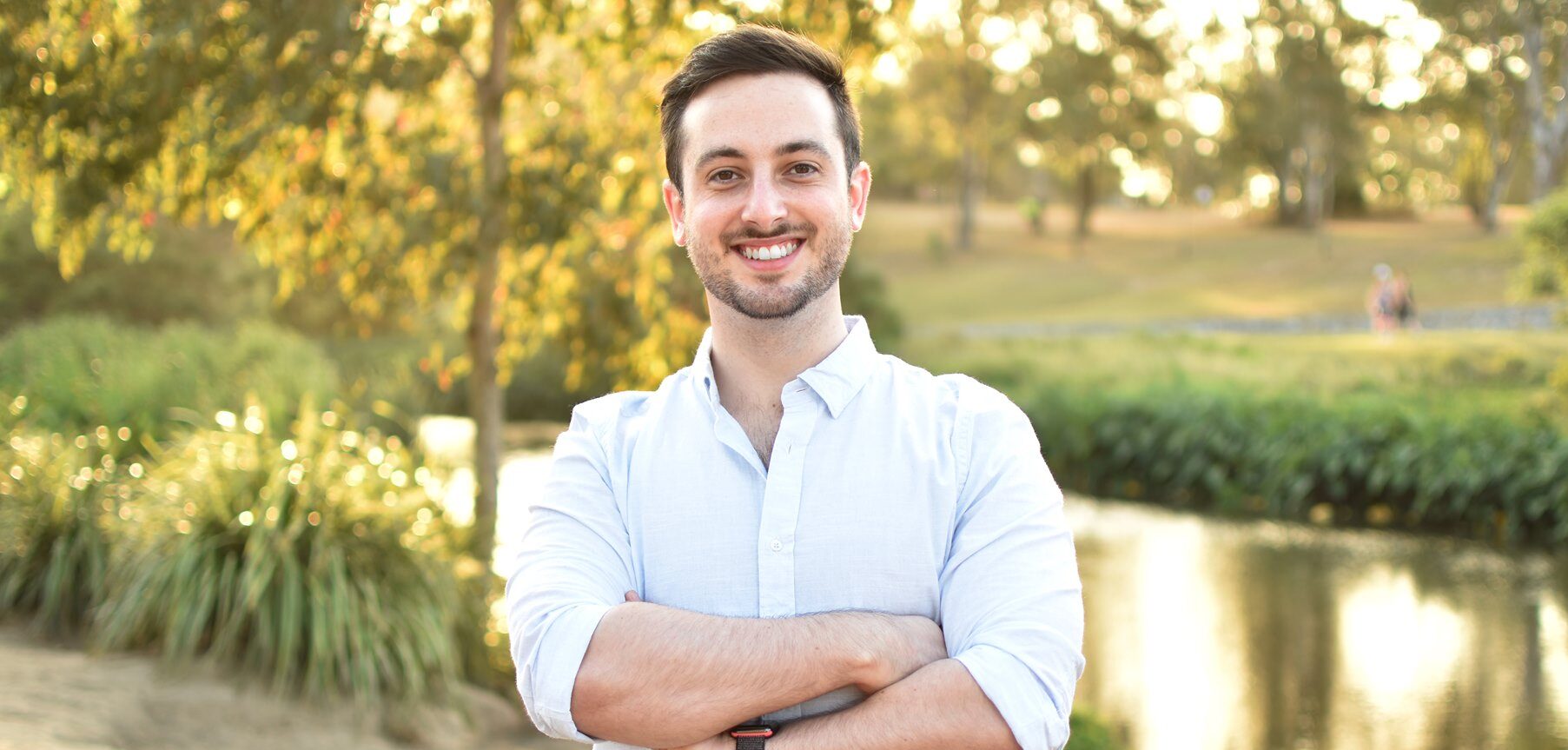
The Queer Castaways: LGBTQ+ Folks on Australian Survivor Explain Why Representation Matters

Australian Survivor has long been a battleground of strategic moves, backstabbing alliances, and fierce physical competitions.
But beyond the game, it also serves as a cultural snapshot, reflecting evolving social conversations, including LGBTQIA+ representation.
This season, three contestants, Myles, Paulie, and Noonan have brought queerness into the limelight in vastly different ways.
While Paulie has been a proud and open gay man from the outset, and Noonan’s bisexuality remained unspoken on the show, Myles delivered an unexpected moment of queer visibility with a single throwaway line.
All three sat down to chat with the Star Observer about their time on the show and the importance of queer visibility on screen.
Not the ‘Token Bi’, Just Myles
Myles, a quirky and strategic player who has earned the nickname ‘The Jungle Rat’ for his colourful gameplay, may not have intended to make a grand statement about bisexuality on the show, but in doing so, he became an inadvertent symbol of representation.
When asked whether his bisexuality was something he deliberately planned to highlight on the show, Myles was candid. “I’m not out there screaming from the rooftops about it, but I’m also not trying to hide it. It’s just part of who I am.”
Unlike the often linear narratives of coming out that gay men and lesbians might receive on reality television, bisexuality is frequently left as an unspoken footnote.
Myles acknowledges this, contrasting his portrayal with Paulie’s, whose sexuality was woven into his storyline, including a moving moment where he received a heartfelt letter from his father about his coming out journey.
“You don’t often get a big, emotional scene where someone’s like, ‘And this is when I realised I was bisexual,’” Myles notes. “It doesn’t fit the same kind of narrative.”
For Myles his moment came in a simple throwaway line with his tribemates “I’m biracial, bisexual, and bitribal” he quipped as they questioned his tribal alliances.
Yet, for those who caught it, his casual declaration was an important moment. “It was a funny line, and I was glad it made the edit. It’s cool if someone sees that and thinks, ‘Hey, there’s a bit of representation for me.’”
View this post on Instagram
The Many Faces of Queer Representation on Australian Survivor
Bisexual people, especially men, are often underrepresented or entirely invisible in mainstream media. While Australian Survivor has featured multiple gay contestants over the years, including 2017 runner-up Peter Conte, bisexuality has rarely been explicitly acknowledged. Myles may be the first contestant to openly discuss his bisexuality on the show.
“There’s definitely been lots of people on Survivor who are bisexual, but it’s not something people tend to talk about,” he says. “You usually know who the gay contestants are because it becomes part of their storyline, but bisexual people often just slide under the radar.”
Myles also sees himself as representing a different kind of queer energy on television. “Paulie’s the gayest man I’ve ever met,” he jokes. “He’s got that classic, big, loud, hilarious presence. I’m more of a weird, nerdy, Gen Z queer. It’s nice to have different kinds of representation.”
Beyond his bisexual identity, Myles is also breaking the mould in other ways. He’s one of the few Asian contestants in Australian Survivor history and has openly embraced his nerdiness while also defying expectations with his hobby of pole dancing.
“People always assume pole dancing is hypersexual, but it’s for everyone. I’ve had multiple pole dancers reach out to me saying it’s cool to see someone like me on the show.”
His gameplay, too, has cemented him as a fan favourite.
Despite being on the outs for much of the game, Myles has maneuvered his way through with strategic prowess most notably by saving Paulie with a hidden immunity idol in a massive move that shocked his competitors and solidified his status as an underdog and cemented a life long friendship between the pair.
While Myles may not have set out to be a flag-bearer for bisexual representation, his presence on the show proves that visibility doesn’t always have to come in grand, emotional narratives.
Sometimes, it’s just about existing, being yourself in a way that others can see and relate to.
“I love that I can represent different groups—whether it’s being Asian, a nerd, bisexual, or even a pole dancer,” he says. “If someone out there sees me and thinks, ‘Hey, that’s a little bit like me,’ then that’s pretty cool.”
Paulie: Loud and Proud
Paulie entered the game knowing that he would be a highly visible, loud, and larger-than-life queer character. As a paramedic, he was used to taking charge in high-pressure situations, and he initially considered toning down his dominant personality.
However, he quickly realised that the extreme conditions of Australian Survivor naturally strip contestants down to their most authentic selves. For Paulie, this meant embracing both his strength and his flamboyance.
“I really wanted to just play the game very authentically to who I am,” Paulie said. “I wasn’t putting on a persona or hamming it up. What you see on Australian Survivor is exactly who I am.”
Paulie was both a strong competitor and an unapologetically camp figure, unique combination in queer representation that doesn’t always get shown, often people are boxes into stereotypes that fit one specific thing, not always showcasing the depths of our personalist.
Australian Survivor has often featured LGBTQ+ contestants, but their queerness is not always at the forefront of their stories. Paulie, however, embodied a blend of fun, flamboyance, and competitive resilience that naturally became part of the season’s narrative.
What was especially significant for Paulie was how well he was received by the audience. While he expected to face some homophobic backlash, he was instead met with overwhelming support.
“To this day, I still haven’t received one bit of hate—no negative comments, no Bible bashing, nothing. Just so much praise,” he shared. “People message me saying, ‘Oh my god, I know someone who reminds me of you!’ I think I just come across as really relatable.”
One of the most touching moments of Paulie’s journey was his emotional letter from home. The letter, sent by his father, contained words of pride and love that Paulie hadn’t expected. Watching the episode with his family, he was overwhelmed by the response from both his loved ones and the audience.
“I got messages from hundreds and hundreds of people across social media. My dad got messages from his schoolmates, from old friends. It was just such a beautiful moment.”
Paulie later laughed about how emotionally overwhelming the letter was in the middle of such a high-stakes competition.
“I blasted my dad when I got home! I was like, ‘What were you thinking? Sending me that letter while I’m out there in the jungle fighting for $500,000?’ But we just laugh about it now.”
Beyond his personal story, Paulie’s strategic and physical gameplay also made an impact. He proved that queer players can be both strong competitors and effervescent personalities, breaking the mould of how LGBTQ+ contestants are often perceived in Survivor’s narrative structure. His endurance during grueling challenges solidified his reputation as a fierce player, while his humour and charisma made him a fan favourite.
View this post on Instagram
The “Power Bottom” Alliance
One of the most entertaining aspects of Myles and Paulie’s relationship was the formation of their lighthearted “Power Bottom” alliance. After both making it to the merge the two struck up a quick friendship, however Paulie soon found himself on the outs and arrived at tribal council with his bags packed, ready to go. However Myles, the famed “jungle rat” had other plans. Producing a surprise advantage at the eleventh hour Myles successfully saved Paulie from elimination thus creating their new alliance ‘the power bottoms.’
“We hadn’t met in the game yet, but once we did, it was like, ‘Yep, we’re besties now.’ Outside of the game, we’ve hung out a lot since we both live in Sydney,” Paulie shared.
“Myles is just a good kid,so much fun, ambitious, cute, quirky, and makes no apologies for who he is.”
View this post on Instagram
Both Myles and Paulie’s presence in Australian Survivor showcased different facets of the queer experience in ways that were relatable and refreshing to see in mainstream television.
Paulie noted how his queerness was an undeniable part of his Survivor journey, integrated into every aspect of how he played the game and interacted with others.
“The editors had no choice but to include my sexuality in my storyline because it’s just part of who I am,” he said. “It shaped how I built relationships and how I communicated, so it was naturally part of my Survivor experience.”
Noonan: A Story Unspoken but Not Unseen on Australian Survivor
Unlike fellow contestants Paulie and Myles, Noonan’s sexuality never made it into the final edit. However, that omission does not mean it was absent from her experience.
“No, not really,” Noonan confirms when asked whether her sexuality was discussed on screen. “Not as much as Paulie or Myles. It wasn’t really spoken about.”
Rather than feeling erased, Noonan sees this as reflective of her personal journey. “It was similar to how me coming out in life was,” she explains. “I’m very blessed with the family that I had—very supportive parents and three older brothers. I didn’t really have to come out; I just came home with a partner and said, ‘This is my partner,’ and they were like, ‘Hi.’”
Her Survivor experience mirrored this ease. “On the island, when people asked if I had a partner, I just said, ‘I have a beautiful girlfriend named Jazz,’ and the conversation went from there. It wasn’t a big deal, which was really nice.”
View this post on Instagram
The Power of Visibility
While Noonan acknowledges the importance of open discussions about sexuality on reality TV, she also values the organic nature of her portrayal. “Survivor, first and foremost, is a social experiment,” she says. “I thought, ‘This is a perfect opportunity for people that look like me, sound like me—a bisexual, gay, whatever they identify as—to see someone like them on TV.’ I didn’t grow up seeing a lot of people like me, so being there was meaningful.”
Reflecting on the evolution of LGBTQIA+ representation, Noonan recalls how early seasons of Survivor and other reality shows framed queer contestants in very specific ways. “I’ve seen over the course of 25 years, especially in the States, how queer representation has changed. Early on, there were moments like Richard Hatch, an openly gay man, forming an alliance with Rudy, a conservative ex-Navy SEAL. That was groundbreaking at the time. Now, we’re at a place where someone like me can just exist in the game without my sexuality being a defining characteristic.”
Challenging Bisexual Erasure
One of the broader challenges in queer representation is the ongoing issue of bisexual erasure. Even in LGBTQIA+ spaces, bisexuality is often misunderstood or invalidated. When asked about this, Noonan acknowledges the struggle.
“I personally don’t face it much, but I know it’s a big deal in our community. I think a lot of it stems from insecurity and misunderstanding. People sometimes see bisexuality as just having more ‘options,’ or worse, as being inherently unfaithful. That’s not how I see it. For me, gender is secondary. It’s about who the person is, not whether they’re a man or a woman.”
Despite these misconceptions, Noonan sees positive changes in representation, particularly in sports, a world she comes from. “With the Matildas and AFLW, the queer community is well represented. I feel lucky that I’m another person in that line who can talk about it. On Survivor, it was great to see that we were all equal—me, Paulie, Myles. No one was held back by their sexuality.”
She also points out how LGBTQIA+ contestants are often unfairly pigeonholed in reality TV narratives. “Sometimes there’s this stereotype that queer contestants are sneaky or manipulative. I’m glad that didn’t come across at all. We were all just players.”
Since leaving the game, Noonan has been met with overwhelming positivity. “I’ve been really lucky—I haven’t received any negativity about my sexuality,” she shares. “In fact, I recently got engaged in February, and since then, Survivor fans have been reaching out with so much love.”
View this post on Instagram
For Noonan, her Survivor journey wasn’t about making a grand statement—it was about simply existing as her authentic self. “I really wanted to show that I was just an average person like everybody else. The beauty of being part of this amazing queer community is knowing you have that support. And on Survivor, it was incredible to see that support extend beyond the LGBTQIA+ players. We were all just people playing a game.”
Australian Survivor continues on Channel 10 Sunday – Tuesday weekly.









